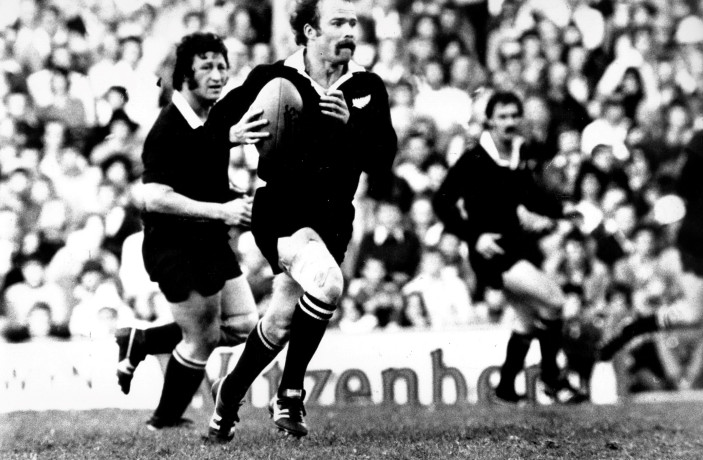Community rugby bounce-back continues, tackle height trial extended
14 November 2023- Community rugby tackle height trial extended for 2024 and 2025.
- 147,434 community rugby players in 2023, up 7% on 2022.
- Strong acceptance and compliance with new tackle height.
- Women and girls’ rugby participation up 20% on 2022.
- New women and girls’ rugby tackle programme set to be introduced.
Community rugby participation in New Zealand has continued its post-pandemic recovery, spurred by the growth of women and girls’ rugby.
NZR has today confirmed 147,434 players for the 2023 season, an increase of 7% on 2022, with women and girls’ participation up 20% to 29,448 participants.
Teenage participation grew 11% to 34,173 players, community coach registrations increased 4% to 9,242 and referees by 8% to 1,564.
NZR General Manager Community Rugby Steve Lancaster said the results were pleasing given it was the first uninterrupted rugby season since the global pandemic began in 2020.
Covid completely changed community sport across the country, and we’ve really only just completed our first normal rugby season in four years. We’re pleased with how the game is recovering.
“Like all sports we still face challenges in the community game, in particular junior boys’ numbers are not back to where they were pre-Covid in some parts of the country. We’ve spent some time understanding the issues and, along with teenage participation, it will be a focus of ours moving forward.”
Lancaster added that the growth in women and girls playing club rugby was a key success for the sport.
“An increasing focus since 2020 has been on getting more women and girls involved in club rugby where they’ll play for a full season as opposed to one-off festivals and tournaments. That means more games and, most importantly, a more meaningful rugby experience enjoying all that’s great about community rugby.”
In 2023, 11,540 junior girls were involved in club rugby, an increase of 36% on pre-Covid (2019). Senior women’s club numbers also saw large growth with 4,515 players, up 40% on 2019.
After successful implementation in 2023, NZR has also confirmed the reduced tackle height in community rugby will be extended until the end of the 2025 season, in line with World Rugby’s global recommendations.
Lancaster said the trial, which involves the first tackler tackling below the sternum and targeting the belly area, had improved the safety and quality of games and was strongly supported by the rugby community.
“Our participants have told us that want the tackle area of the game to be safer and that’s been our focus. The resounding feedback we’ve heard from our players, coaches and referees is that they understood the reason for change and that’s been critical to its success.
“We appreciate it’s an adjustment to make and our community participants can be proud of the way they have adapted and played the game this season. There’s still room for improvement, but we’re seeing the majority of first tackles below the sternum, more offloads and faster games.”
Match analysis by NZR found that 90% of first tackles in 1st XV school rugby, 78% in senior men’s rugby and 72% in senior women’s rugby were below the sternum this season. In premier men’s club rugby, offloads increased by as much as 65% when compared to games in 2022.
Survey data from community participants identified that 61% thought the lower tackle height was either significantly safer or somewhat safer for the first tackler, with 72% agreeing that the lower tackle height was safer for the ball carrier.
NZR has confirmed an expanded Tackle Clinic programme in 2024 to meet the growing needs of the women and girls’ game.
Restrictions around the defending halfback at scrums in all grades of community rugby will also continue for the next two seasons.
Over 95% of participants surveyed supported the impact the halfback innovation has had on attacking rugby through quicker, cleaner ball. Game analysis by NZR identified only 2% of all scrums now result in a handling error.
A maximum scrum push of 1.5 metres in senior non-premier rugby has been extended with 68% of participants believing scrums were safer as a result.
Community Rugby in New Zealand: 2023 key stats
- 147,434 players: 7%+ on 2022
- 9,242 coaches: 4%+ on 2022
- 1,564 referees: 8%+ on 2022
- 61,539 junior club players: 1%+ on 2022
- 34,173 teenagers: 11%+ on 2022
- 38,015 senior club players: 5%+ on 2022
- 29,448 women and girls players: 20%+ on 2022
- 11,540 junior club girls: 36%+ on 2019 (+14% on 2022)
- 4,515 senior club women: 40%+ on 2019 (+28% on 2022)
- 49,999 junior club boys: -2% on 2022
- 140,000 girls’ rugby activator engagements in 2023
2024 and 2025 community rugby game innovations:
1.Reduced tackle height to below the sternum targeting the belly area for all community rugby grades
The first tackler must tackle below the sternum and target the belly area. The second tackler can legally tackle below the shoulders in accordance with current rugby law.
2. Defensive halfback offside at scrum for all community rugby grades
The halfback of the team not in possession must remain 1 metre from the scrum and may not advance past the tunnel until the scrum has ended.
3. Maximum 1.5 metre scrum push for all community rugby, excluding senior premier club rugby grades
The maximum push of any scrum is limited to 1.5 metres, unless the scrum is within 5 metres of the goal line. Please note: Small Blacks rugby at U12 and U13s is already limited to a maximum 0.5 metre scrum push and Teenage rugby is limited to a maximum 1.5 metre scrum push.
Reduced tackle height in community rugby: 2023 key insights
Tackle Height in Premier 1st XV School Rugby: 90% of first tackles below the sternum.
Tackle Height in Senior Men's Rugby: 78% of first tackles below the sternum.
Tackle Height in Senior Women's Rugby: 72% of first tackles below the sternum.
Tackle Type in Teenage Boys' 1st XV: Nearly 90% of tackles involved 1 tackler.
Safety Perceptions of surveyed community rugby participants
- 89% understood the reason for the tackle below the sternum law.
- 72% agreed the lower height was safer for the ball carrier.
- 61% thought lower tackle height was safer for the first tackler.
Tackle height impact on Premier Men's Games
- Offloads increased by around 65% in premier men's games compared to 2022.



